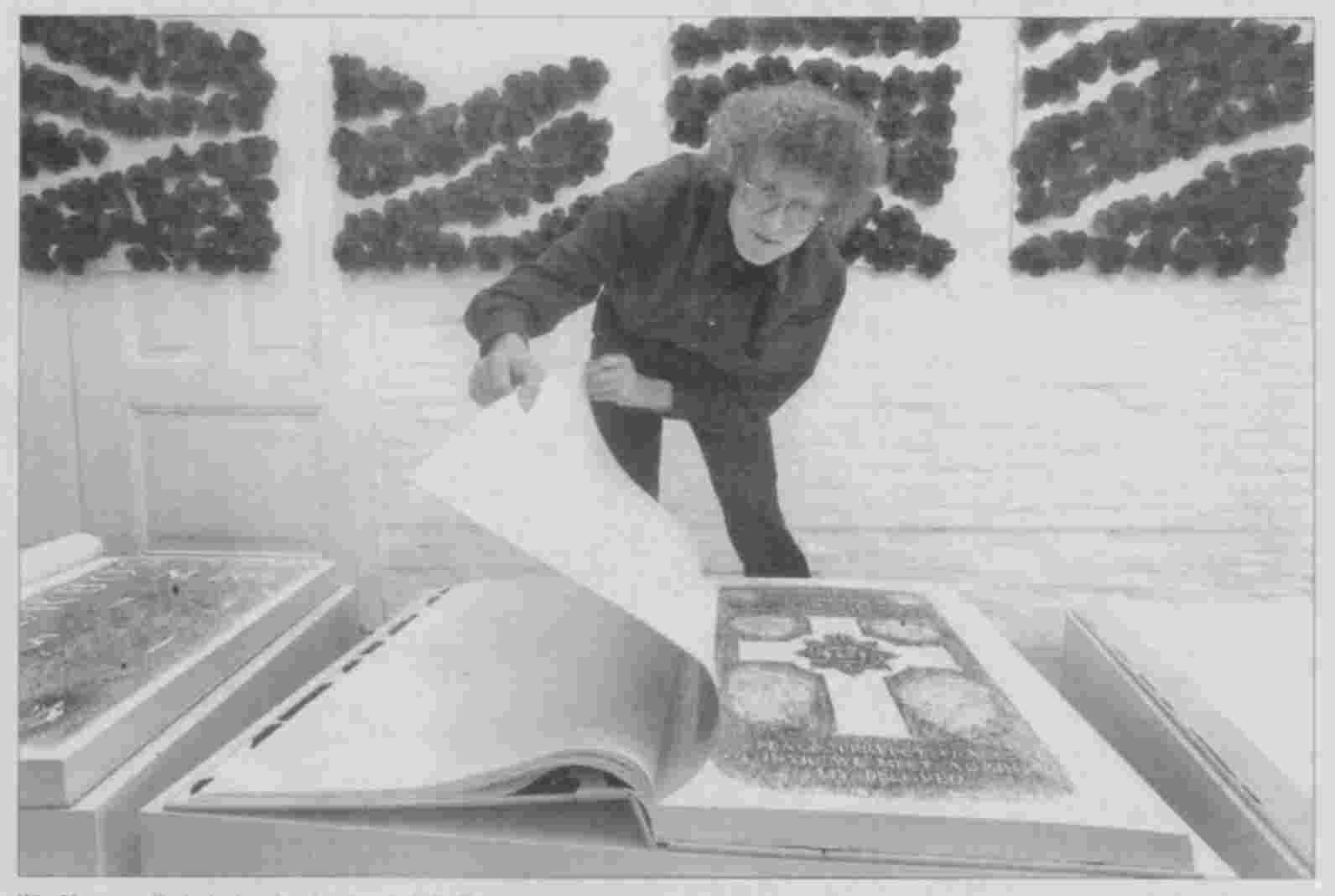
Who can forget the fascination of tracing a penny? Making your own money simply by putting a little piece of paper over a coin, then just rubbing over it with a pencil. This was a way to imagine yourself rich.
The former art teacher from Nijmegen Wim Maas created a monument for fallen soldiers using this art form. This story sounds incredible. But at the cemetery Jonkerbosch in Nijmegen Wim Maas has traced 1,632 headstones on paper. One thousand six hundred and thirty-two headstones traced to scale. It took him four years to complete this project. In the cemetery, at home and sometimes for short times in a hired work area. He went there when he needed to use a fixative spray for the drawings. The acetate, which comes from this spray, should not be used in home environment. This job alone took three months to complete.
How does somebody get the idea to undertake such a task? Wim Maas (born 1949) does not really know himself. The idea perhaps came after he earlier traced the two headstones from his parents graves on to paper. So this is also an undertaking for which he is unable to explain his motivation.
Ultimately all of the Jonkerbosch drawings are collected in six definitive volumes. With these volumes Wim Maas moves into the public eye. The final destination for these wonderful commemorative books is to be England, as the fallen soldiers were all in the British and Canadian military service.
Wim Maas thought it likewise fitting to initially present his monument at the exhibition in Nijmegen. The gallery owner from Nijmegen - Wim de Natris - immediately saw the importance of this work. You are constantly amazed when looking at the six volumes that Wim Maas turns page by page. He loves to talk about the project, expressing himself with straightforwardness of a dedicated artist. He courageously combines this straightforwardness with contained emotions. His enthusiasm is not yet burnt out.
The work Maas got through was immense. He worked in sections of 16 graves every time, 'sixteen', because these made up a component of each volume. First the headstones were thoroughly cleaned, then Maas clamped the paper on to the upright headstones and began tracing. For that purpose he squatted down in front of each headstone. This extremely uncomfortable position resulted in an achilles tendon infection.
All of the tracings differ, as the details on the headstones themselves differ. As the texture of the stones - which were imported from England - is full of variation, so each drawing also differs in this way. The artist himself also brought variations in by applying his graphite to the paper with variations in pressure; sometimes softly and sometimes with more force.
Over these four years, visitors from the Commonwealth countries have watched in amazement to see the artist at work; they were in awe. Many relatives of the fallen soldiers were clearly moved. This is why Wim Maas feels certain that his work belongs in England. He is in no doubt about this. The final destination for the work will present itself as it comes to more public attention.
The bound volumes - Wim Maas also attended a bookbinding course for his project - are laid out on six pedestals in the gallery to form an arch. This deliberate arch lay out, reflects the way in which the graves in Jonkerbosch are arranged.
The artist was able to pursue this project as he lost his teaching job and therefore was forced to join the unemployed. To get on top of his unfortunate situation, he started to plan his project and in 1993 he started his work in the cemetery. Wim did not have to pay for the paper he used, as when he inquired as to whether the people at KNP/Leijcam could help him, they were so amazed by his project, that they agreed to supply all of the paper he would need.
To dress up the presentation of the Jonkerbosch project, Wim Maas returned to Jonkerbosch once more. He collected from there plastic poppies. He used the disposed of wreaths from the cemetery to collect these poppies for his display. In the gallery Wim Maas made two landscapes using these poppies and for the second time traced some more gravestones. In doing these last tracings he felt the enormity of his task lying heavily on him. Wim knows for certain that he will never again be able to carry out a project like this.